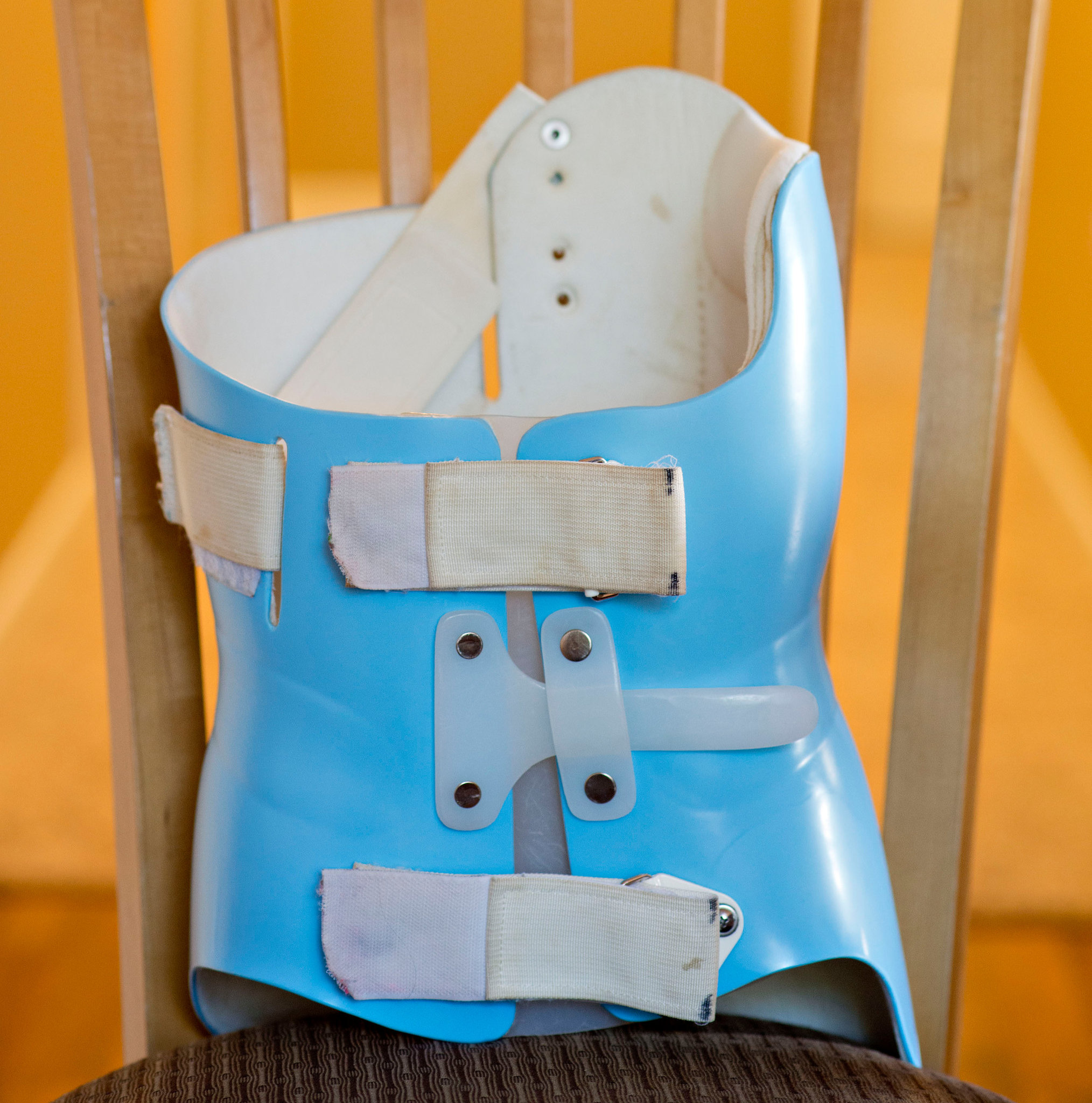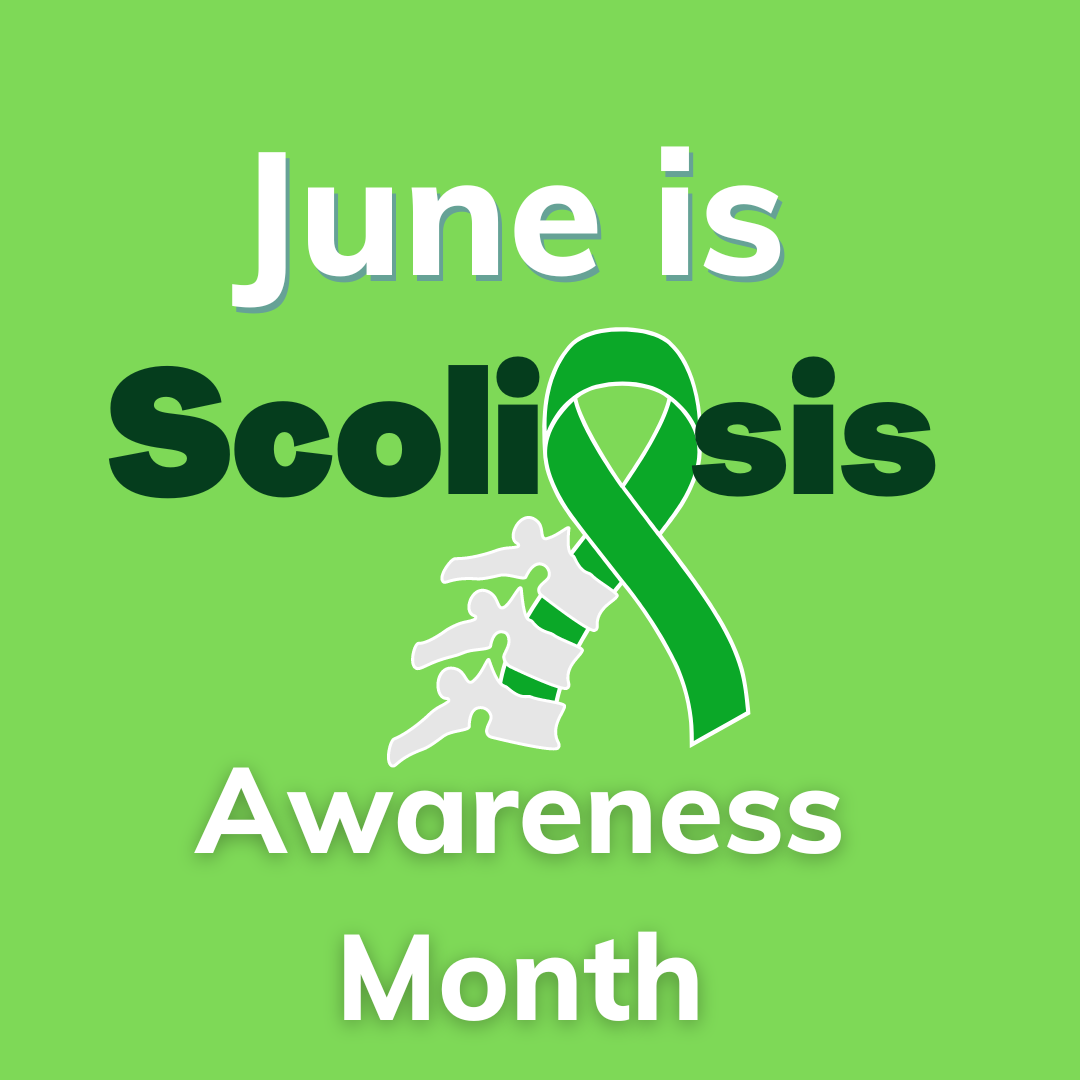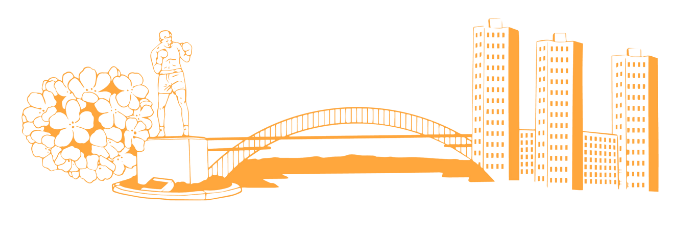Photo courtesy of The Medical Republic.
Growing up I always heard from my peers or teachers to “sit up straight, make sure your bag isn’t that heavy or else you’ll get scoliosis.”
I never understood how any of those things could cause a major curve in your spine, but being young I was doing what I was told and tried not to slouch or have a heavy bookbag.
Growing up my mother would tell me to, “sit up straight” or “why are you sitting crooked?” I would always tell her that I was, but at one point she saw the frustration on my face and eventually stopped asking.
It’s not known by many, but June is National Scoliosis Awareness Month, symbolized with the color green.
Scoliosis affects two to three percent of the population — or an estimated six to nine million people in the United States — and develops in infancy or early childhood. However, the primary age of onset for scoliosis is 10 to 15 years old, occurring equally among both genders.
Females are eight times more likely to progress to a curve magnitude that requires treatment.
According to the National Scoliosis Foundation every year, scoliosis patients make more than 600,000 visits to private physician offices, an estimated 30,000 children are fitted with a brace and 38,000 patients undergo spinal fusion surgery.
One day in fourth grade there was an annual scoliosis check in my grammar school.
My class went down and the girls all lined up outside of the nurse’s office. They told us all to bend down, touch our toes and they ran their hand down our spine.
I was up next.
The woman who checked my spine didn’t even finish going all the way down my back when she turned and yelled out “She’s got a hump!”
I was embarrassed and confused as to what that meant. They gave me a pink slip and told me to take it to my guardian so they can give it to my doctor. I noticed kids laughing as I walked by.
I go to my pediatrician and he confirmed I indeed had a hump. My spine was “crooked.”
He recommended me to go to another doctor that explained to us that scoliosis had nothing to do with outside forces, meaning anyone can develop it from a young age. It is caused by weak back muscles therefore your spine not being “properly held in place” causing the curve.
He immediately noticed my shoulders and hips were uneven and the hump in my back when I bent down.
I went for MRI’s to see exactly where my curve was, if it was affecting any nerves around my spine.
I don’t remember the specific degree of my curve but seeing the x-rays I would tell people or pretend to draw in the air a “more slanted question mark.”

The doctor told me I needed to have a back brace made.
According to the American Association of Neurological Surgeons, braces are only effective in patients who have not reached skeletal maturity and for maximum effect, should be worn 16 to 23 hours everyday until the growth stops.
If a child is still growing and his or her curve is between 25 degrees and 40 degrees, a brace may be recommended to prevent the curve from progressing.
There are different types of braces available including new designs that fit under the arm instead of around the neck.
Large studies indicate that braces, when used with full compliance, successfully stop curve progression in about 80 percent of children with scoliosis.
I remember having my measurements taken on my waist, back, armpits, shoulders and collar bones. After a month, I had my custom brace.
The brace was a large plastic with three straps and Velcro on it. I put it on and I felt like I had armor on.
I had to wear it for 22 hours a day only taking it off for gym class and to shower at night. I felt so immobile and odd going to school with it.
When I told some peers, many did not poke fun at me. They knew it was because of a medical reason, but I didn’t like how immobile I felt in middle school, so in 8th grade I decided to stop wearing it all together.
My mom was furious, my doctor was disappointed, but at the end of the day, he told us it was my choice. But he did inform me that as I got older, I needed to keep a strong back so that I could minimize back pain as an adult or when I planned to have children.
Since then, my scoliosis has not affected my life in any bad way.
Sometimes when shopping for clothes, I’ll notice that one sleeve may fall off my shoulder more due to having uneven shoulders or one side of my shirt fitting a little more snug because of my hump.
As I’ve gotten older, I’ll sometimes feel a strain in my back due to sitting up too long — I usually sit in an angle to offset the strain — or feel some strain when walking for long periods of time.
I noticed for myself, lifting weights made me almost forget I had scoliosis. My back felt strong and I did not feel any strain after that.
But I’m not the only one who’s gone through this.
Natalie Oller, a 23-year-old 2021 Psychology graduate from New Jersey City University (NJCU), also experienced scoliosis.
She found out she had scoliosis in 2012, when she was 14 years old.
She was two weeks shy from starting her freshman year of high school when her mother stood behind her and realized one of her “shoulder blades protruded from my back more than the other.”
Her mother asked if there was any pain or discomfort, but there wasn’t.
“Because she was genuinely concerned about it, we did have my primary physician check it out, at which point, after an x-ray, I was diagnosed with scoliosis,” Oller told Slice of Culture.
“Because I wasn’t showing any other physically visible signs of scoliosis at the time, it’s interesting to think about how I could’ve possibly found out about my scoliosis much later in life, when a brace would’ve no longer been corrective or not at all, had it not been for my mom simply standing behind me and being as attentive to me as she was in the moment.”
Oller was referred to an orthopedic surgeon at a spine center in Englewood, NJ for further treatment.
There, she was prescribed a brace called a Boston Brace, which is very commonly prescribed to scoliosis patients.
“I had my scoliosis brace specially made by an orthotist in Hoboken, NJ who took measurements of my torso and explained to me that considering the severity of my scoliosis curvature as well as of my tall size but very thin shape, my scoliosis brace was going to require additional custom work to assure it would fit and be effective,” Oller explained.
The brace took three to four weeks to make.
“Although it’s been 8-10 years since my experience with scoliosis, I recall it being some of the darkest days of my adolescence,” she added.
“I absolutely despised wearing my brace because it was very uncomfortable. I imagined it being a similar experience to wearing a corset in the 18th century.
“I wore my brace for up to 18 hours a day for two whole years, only removing it to shower and sleep. Wearing it in the summer was a separate nightmare because of the lack of layered clothing I wore underneath to form a protective barrier between the brace and my skin, given the heat, and I therefore usually didn’t wear it as often as I was supposed to.”
She said it also felt suffocating and it was hard for her to bend over because it was so stiff. If she moved around too much while wearing it — especially without layered clothing — the brace would cut into her skin.
“I despised wearing my brace to school even more so because of how uncomfortable it was to sit in such small desks with the brace on,” she continued.
But she was able to bring a small pillow to school for back support, thanks to a nurse’s note, but it brought “a lot” of “undesired attention and questions.”
Still, she would be open to share about her diagnosis, but would usually have to explain further because “very few” people were familiar with scoliosis.
“Looking back now, I see it as an opportunity I was given to educate others on the condition,” Oller said. “However, I was very embarrassed of my condition. It took quite some time of sharing my experience with others before finally meeting somebody else who was at least familiar with the condition.”
“For a while, I hadn’t known anybody else who had scoliosis or who had worn a scoliosis brace and I felt like such an outcast because I had nobody to relate to in that aspect.”
People would point and whisper to their friends as they walked by, making her feel very insecure, but she said she had a good support system to help her through it.
Now, Oller said she continues to suffer from significant back pain, and it worsens if she stands for extended periods of time or walks long distances.
But despite the pain, she’s thankful for her experience.

“My experience has helped me develop resilience but also grow more comfortable with being vulnerable. I’ve learned I shouldn’t be ashamed of my condition or any other experience I undergo because although it doesn’t define me, it forms part of who I am,” she added.
“To those young children in school, you are not alone and there is nothing wrong with you!
“As a community and in schools, we should teach students more about medical conditions, disabilities, but more so a condition that affects more than 600,000 children and adolescents every year.
“We’re hoping with our experience, it helps anyone going through the same thing.”


